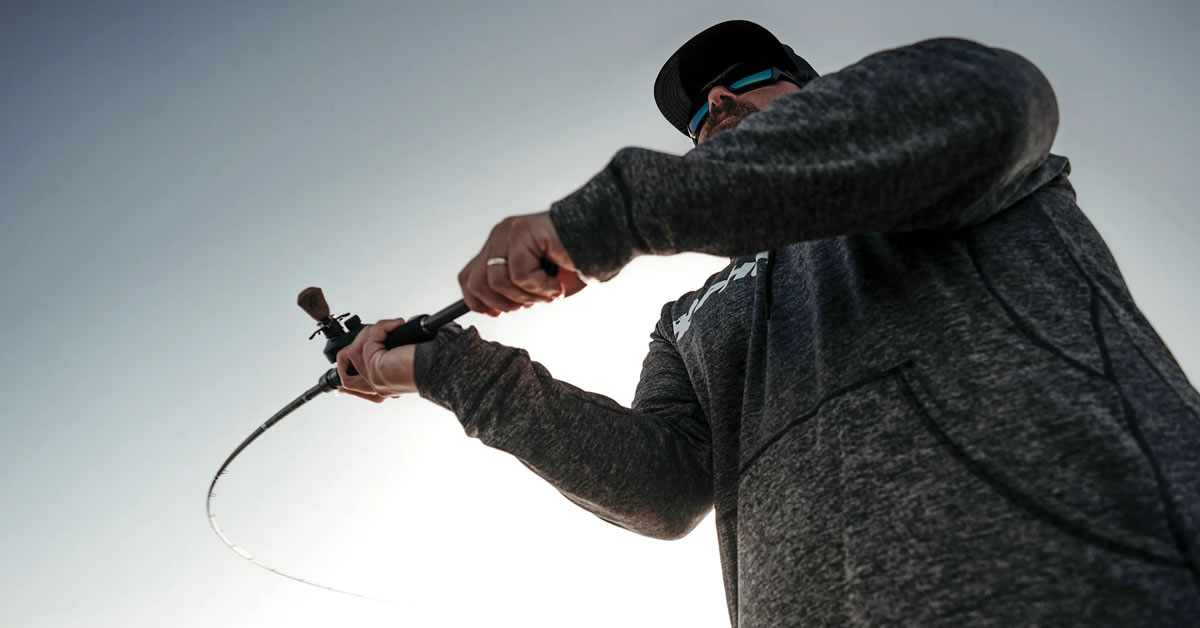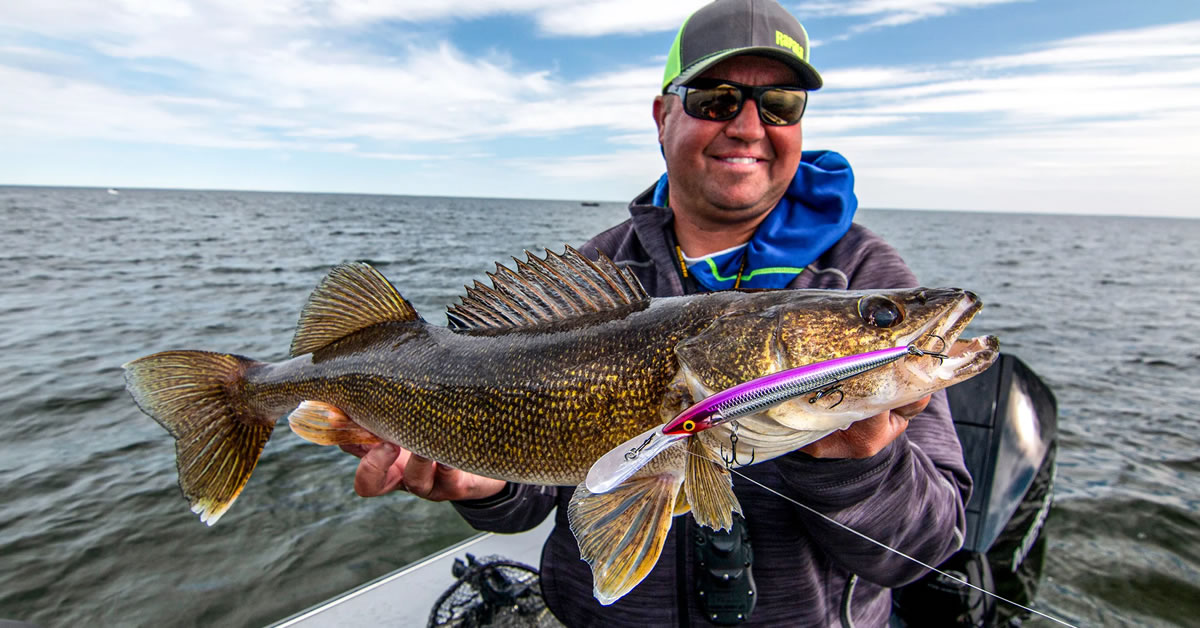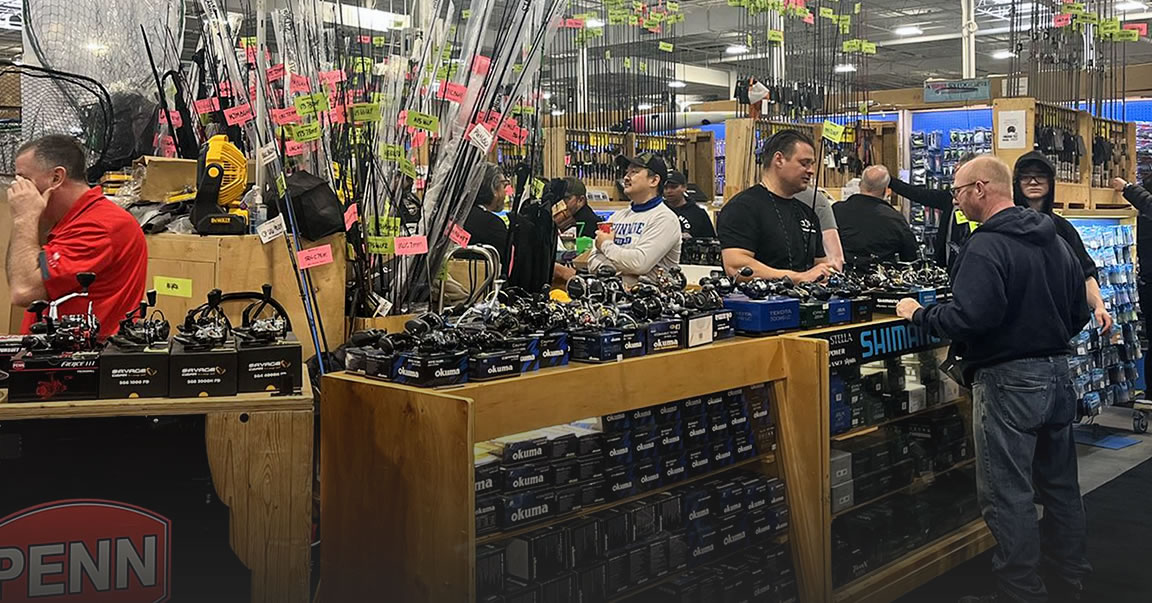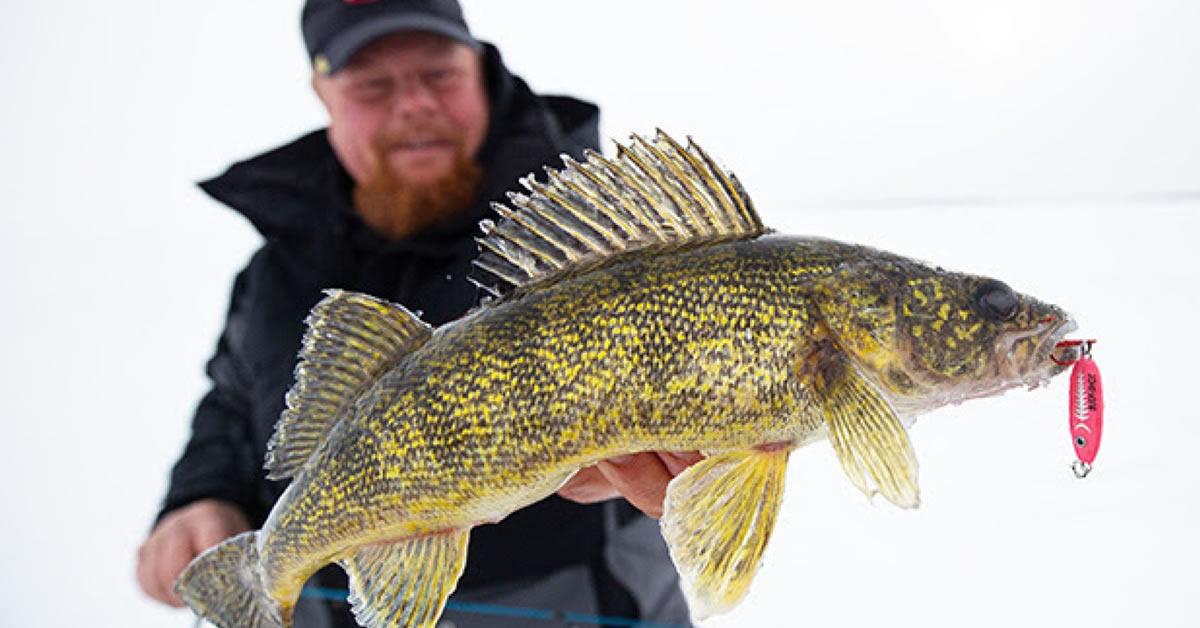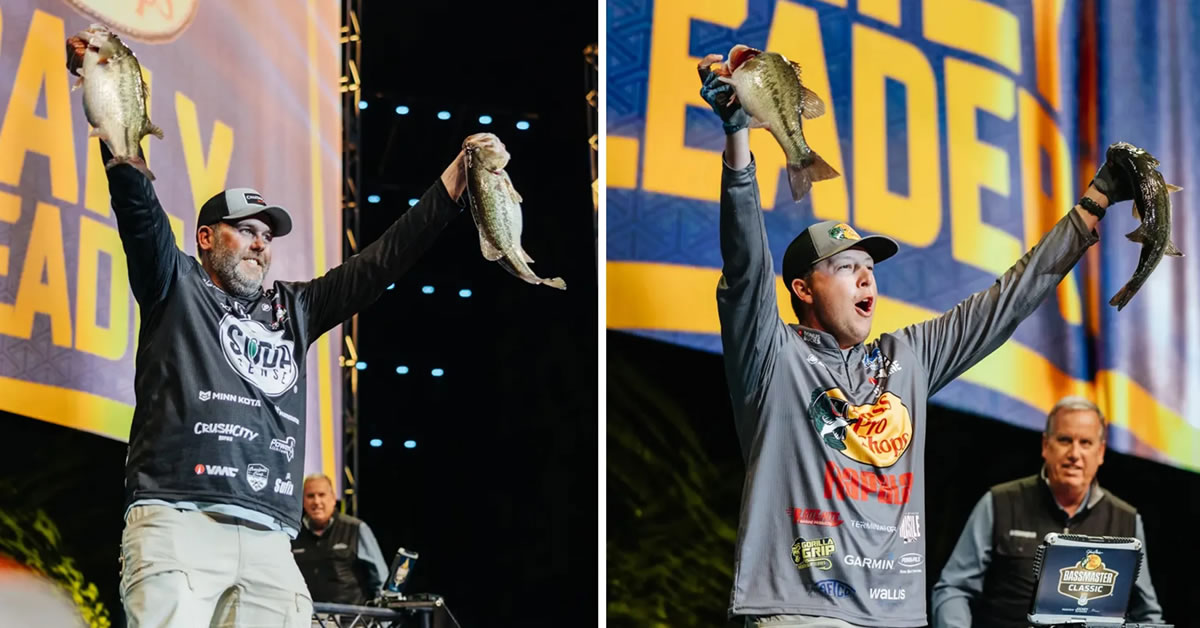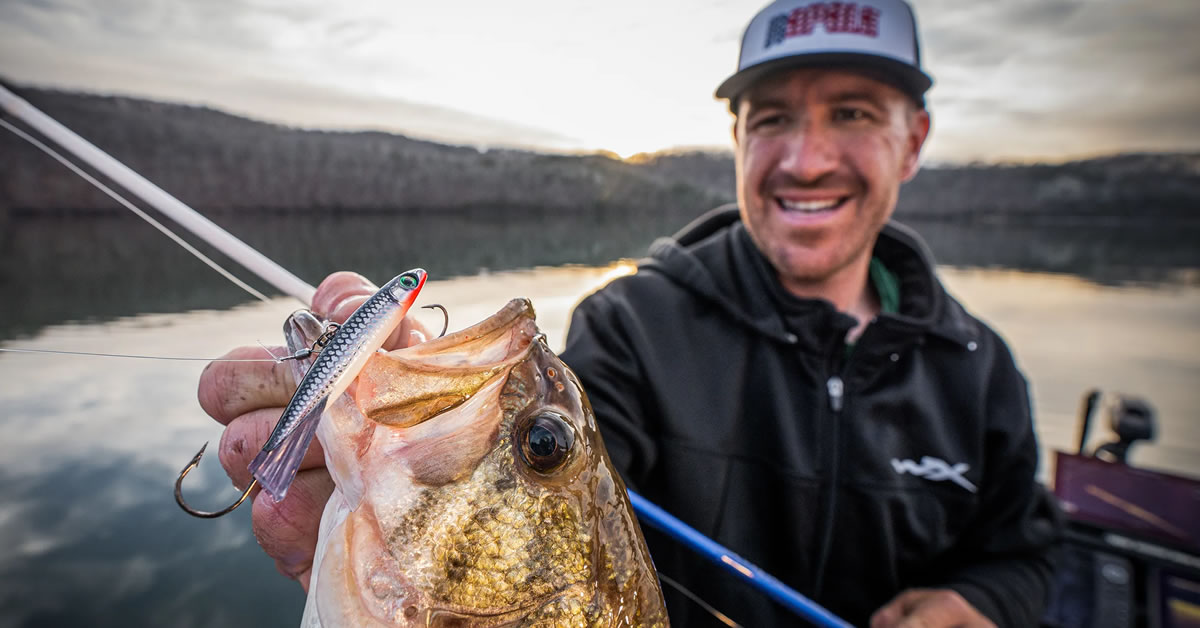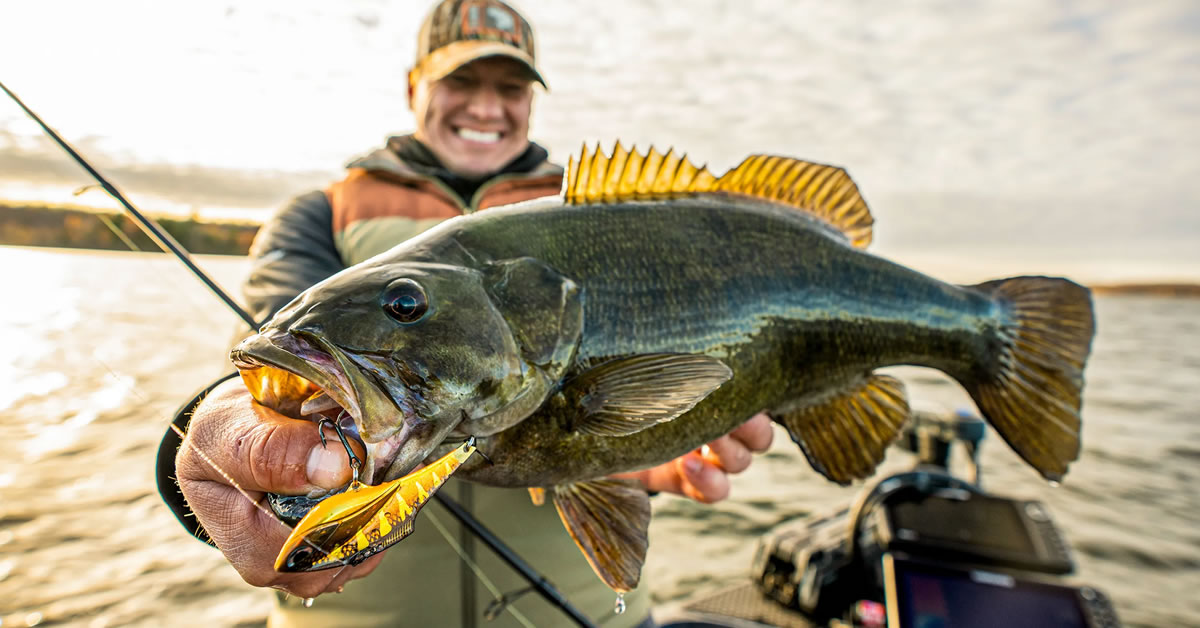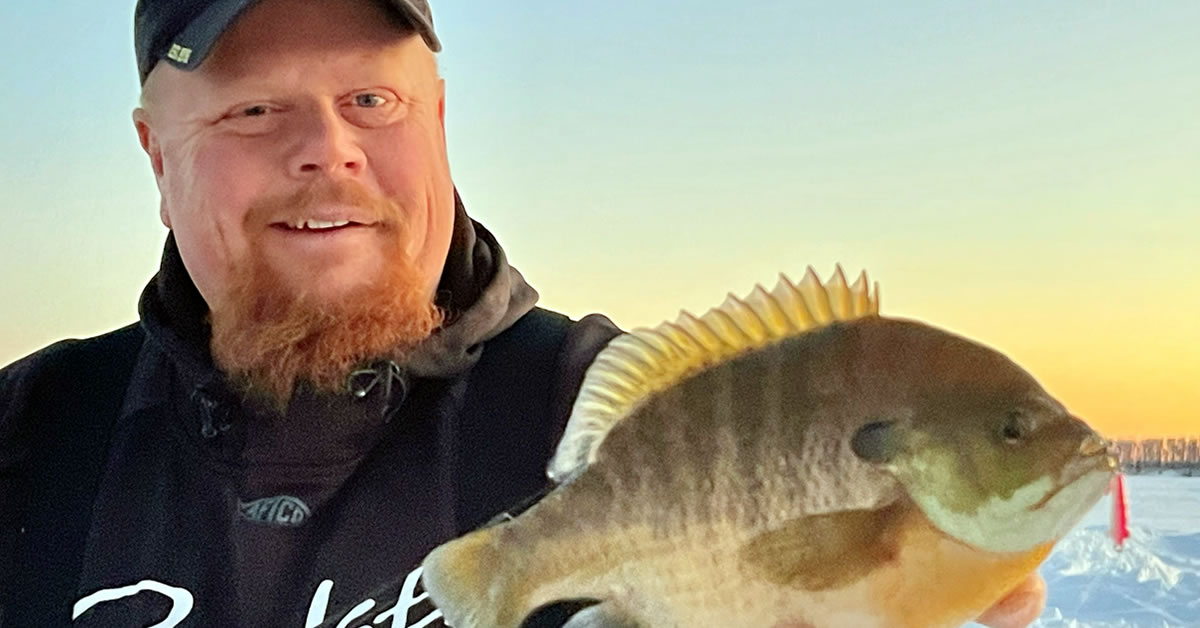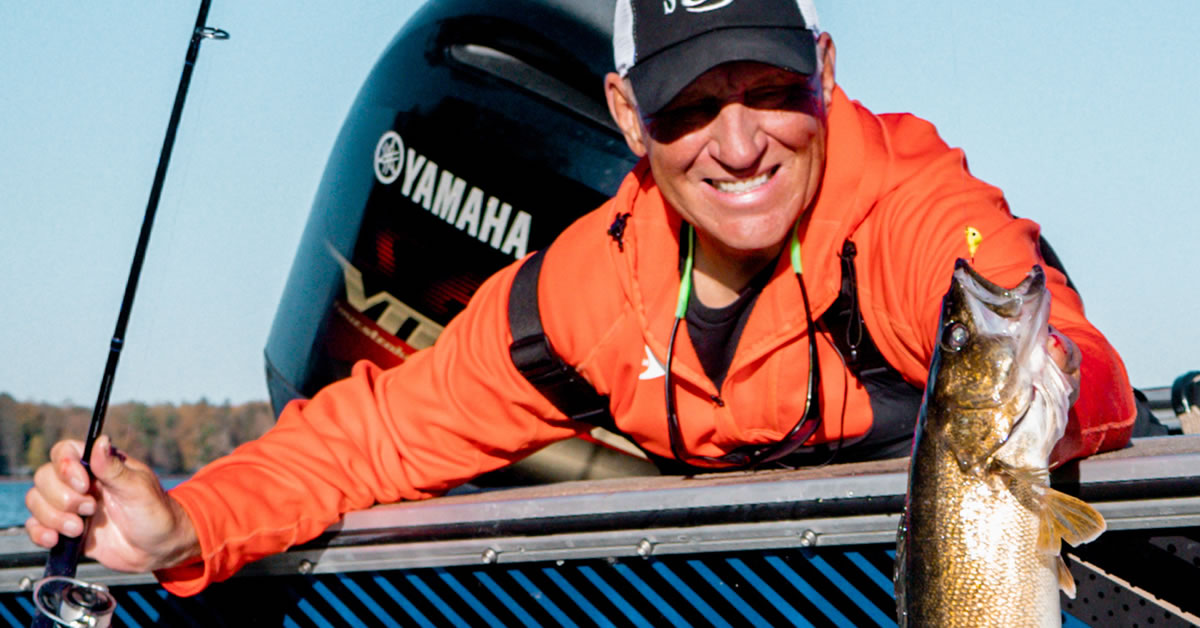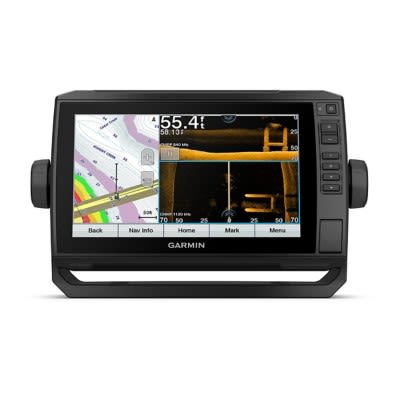Winter Perchin'
by Kevin FassbindPerch are unquestionably one of the most sought after panfish during the hardwater season. It would seem they have the perfect combination of scrappiness and delicious to put them near the top of any panfisherman's list. The habitat is vast in the northern tier of states. Farm ponds in the Dakotas, mega lakes of north central Minnesota, small to medium natural lakes and impoundments across their range, and portions of the Great Lakes. For the purpose of this article, I will focus on my strengths. A lifetime of fishing the deep natural lakes of Madison, Wisconsin, and over 20 years of fishing both Leech Lake and Lake Winnibegoshish in north central Minnesota.
.jpg)
.jpg) My belief is that a lot of fish are missed by those who are more interested in watching their graph than the business end of the rod. If I am over a good school, the only time I will check my graph is when my bait is dropping towards the school. When my bait reaches the top of the school I stop the fall. At this point I am only interested in my spring, assuring I am ready for a bite. By taking active fish off the tops of these larger schools it is possible to catch more fish out of a concentration. Dropping into the middle of schools tends to disperse them more quickly.
My belief is that a lot of fish are missed by those who are more interested in watching their graph than the business end of the rod. If I am over a good school, the only time I will check my graph is when my bait is dropping towards the school. When my bait reaches the top of the school I stop the fall. At this point I am only interested in my spring, assuring I am ready for a bite. By taking active fish off the tops of these larger schools it is possible to catch more fish out of a concentration. Dropping into the middle of schools tends to disperse them more quickly.
Technique-wise, fishing in these depths creates some interesting challenges. The rigging for this deep water is somewhat unique. The rigs I use are always partially homemade it seems, beginning with a piece of 12 gauge copper wire about 16 inches long. Pound each end of the wire flat and then place a piece of heat shrink that snuggly fits over the flattened end of the wire and a barrel swivel. Bury the swivel so only one ring hangs out. Repeat on the other end and you have an awesome deep water sinker. My jig of choice for this deep fishing is almost always a Custom Jigs and Spins Rat Finke in a strait glow or a glow orange. Dress the jig with 2 maggots or a piece of Uncle Josh Pork MEAT Ice Leeches (2-inch) in red or chartreuse. This rig allows you to fish a petite presentation at great depth. The reason I like a longer sinker than most is that it allows me to distance my bait from my sinker. Always tie your dropper line just shy of the length of your sinker to decrease the possibility of a tangle.
Fishing a sprawling 50,000+ acre lake like Winnie or Leech Lake is a vastly different experience. Having a unit like the Humminbird 688 CI HD with a GPS and Lakemaster Chip will provide you with a super-accurate lay of the lake, and even an escape route if you lose sight of the shore. Fish in these mega lakes use many different habitat types, soft bottom basin areas, hard bottom bars and humps, and shallower flats usually with a gravel bottom. Most areas of these very large lakes contain all the habitat types in an area considerably smaller than the overall size of the lake. Often travel and time constraints make it necessary to become familiar with a portion of the lake instead of the entirety. No matter which habitat choice you choose to check for fish, the absolute best choice for a search tool in these clear lakes is the Aqua-Vu Micro. The new Aqua-Vu Micro 5 has a carrying case which you can strap on allowing you to hole-hop and have your hands free to carry a rod while you scout. The reason I like the viewing device over sonar is simple math. In clear water in 20 feet, I have a viewing diameter of around 30 feet with the Aqua-Vu. Sonar gives me a look at approximately a 10-foot circle at the same depth. If checking out shallower water, the disparity becomes even greater. The other advantage to a viewing device is that you have a physical presence at the depth you are looking for fish. What this means is that often fish will be drawn from out of view to check out the camera you are dropping into their environment. Simple rule of thumb, the more fish you see the better the spot, although it can be difficult to assess size while viewing. Determining size takes practice. A simple technique is to look at the ratio of height to length-bigger fish tend to be deeper bodied. Another way to assess size is to quickly lift the camera, if the fish disappears from view, it was just really close to the camera and not very big.
Once located, catching these fish can range from fairly easy to fairly difficult depending on habitat type. Mud flat fish feeding on mayfly and lake fly larva (which are easy prey for perch) tend to be more difficult to catch but are often larger on average. The first choice on these lakes is always a spoon like the Acme Kastmaster tipped with several maggots, waxworms, or a minnow head. Observe your graph and try to assess the interest of the fish. If fish are denying my offering, I will switch to a smaller spoon like a 1/12 Kastmaster or a 4.5-5mm tungsten Custom Jigs and Spins Chekai. Both baits can be tipped with maggots or a piece of Uncle Josh Pork MEAT Bait. The 2-inch Meat Leech in red or chartreuse or a piece of a 4-inch Pork MEAT Leaf Worm. Some of the Uncle Josh leaf worms mimic mayfly larva in color and action. These small tungsten jigs will easily carry bait quickly to 20 to 30 feet, which is where most mud flat fish will be found.
Fish on harder bottom humps, bars, and shallower flats tend to be less finicky. Their forage consist of darters, minnows and crayfish. These prey items tend to be a bit more mobile and require more of a commitment to attack from a predator, which tends to make these fish easier to catch. When on this type of perch I will not even use a graph. If these fish are in the area they will hit. When I'm on this bite I drop my spoon to the bottom, jig it up 2 feet and repeat 3 times, if no action I'm off to the next hole at least 30 feet away. Larger spoons like the Acme Kastmaster 1/4 ounce will get to the fish quickly and weed out a few of the smaller specimens. Most importantly they will get through the slush that is usually involved with 2 foot plus ice depths. Favorite spoon colors are any combo of gold, silver, chartreuse and orange. If you find yourself on one of these fast bites that requires a lot of sorting, be sure to try a piece of Uncle Josh 2-inch Meat Leech on your spoon instead of live bait. Catching 20 plus fish without rebaiting is not unusual. A trick for this application is to cut 2 hooks off your treble hook as the buoyant flowing pork occasionally gets hung on the extra hooks.
I hope this article has given you some ideas to put more perch on the ice this season!



